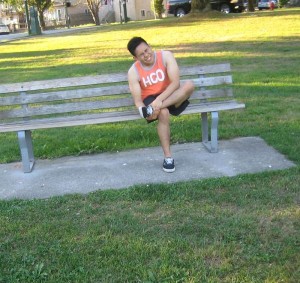Ankle dislocations typically occur when an individual ends up with a fracture or sprain. Once an ankle is dislocated, the adjacent bones within the joint are displaced to the point where they do not have contact with one another. When an ankle dislocation occurs, the bones of the ankle including the tibia, fibula and talus as well as ligaments and soft tissues that surround the damaged bones including the muscles, tendons, nerves and blood vessels are affected.
Diagnosing an ankle dislocation
The signs and symptoms of an ankle dislocation are quite similar to a sprain or break. In most cases, an X-ray is required to properly assess the damage. Dislocations can cause intense pain and almost always lead to immediate swelling and bruising.
The harshness of the pain might reduce but the region of the dislocation stays tender especially when touched. When an ankle is dislocated, it loses its functionality and the foot might turn numb if the nerves or blood vessels are pinched.

Potential risk factors
Individuals who engage in contact sports are at high risk for ankle dislocations especially athletes who do not utilize proper ankle support. As for baseball players, they face a high risk for ankle injury every time they slide into a base.
Cross-country runners are also prone to ankle dislocation since they run over uneven and jagged terrain. Those who have previous history of ankle injuries are more likely to end up with injuries in the future. Individuals who were diagnosed with arthritis are also at risk for ending up with a dislocated ankle as well as those who have poor muscular tone.
Adequate rest and rehabilitation
Most cases of ankle dislocations with a sprain or fracture might require surgical intervention upon consultation with a doctor. Surgical screws and pins are taken out after 8-12 weeks, but severe cases might be left in permanently. The recovery from surgery might take 4 ½ – 6 months. In addition, cases of ankle dislocations that could not be repaired with surgery might take up to a year to properly heal.
Support
Ankle dislocations can be avoided by using appropriate ankle support to the athletic gear. Always bear in mind that athletes can tape the ankles or utilize an elastic wrap to add support beneath the gear.
Proper warm-up before a workout or game can go a long way in preventing ankle injuries. Those who experienced previous injuries to the ankle must add a high-intensity lower body strength and conditioning program after the injury has been fully rehabilitated in order to increase the strength of the joint as well as reducing the risk for re-injury in the future. In addition, running on uneven surfaces must be avoided as well.
When an individual is suspected with a dislocated ankle, it is best to seek immediate treatment in order to avoid any complications.
